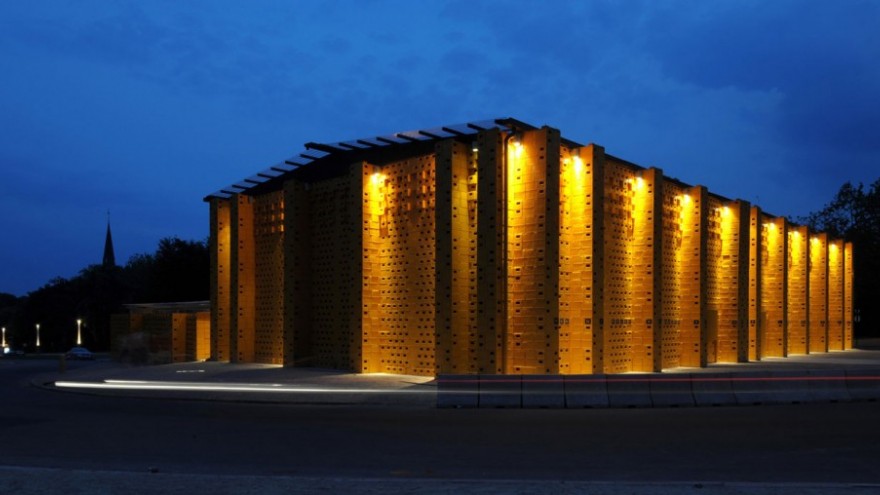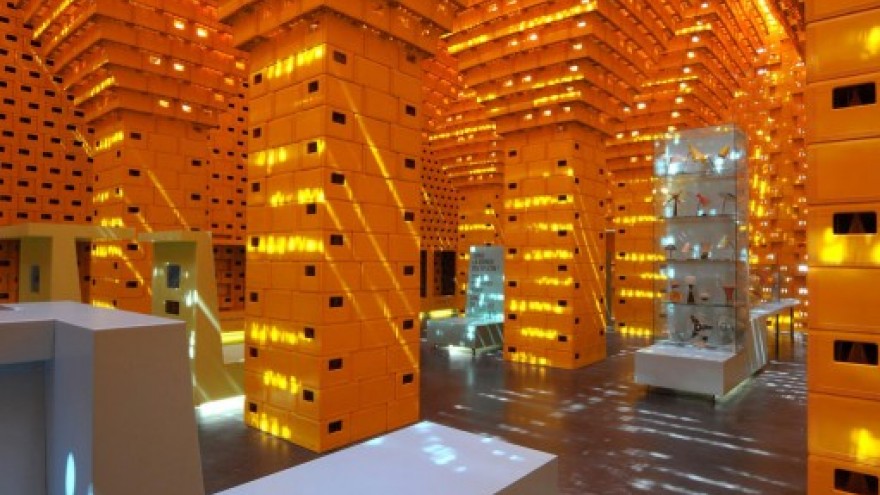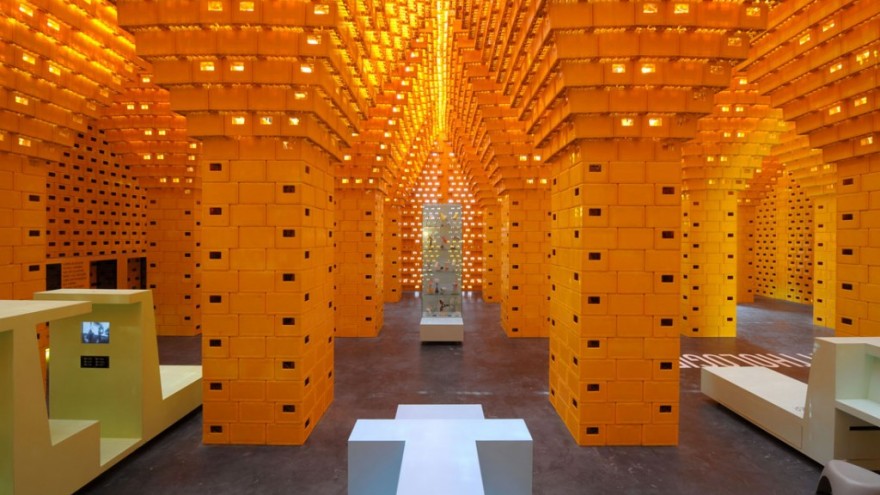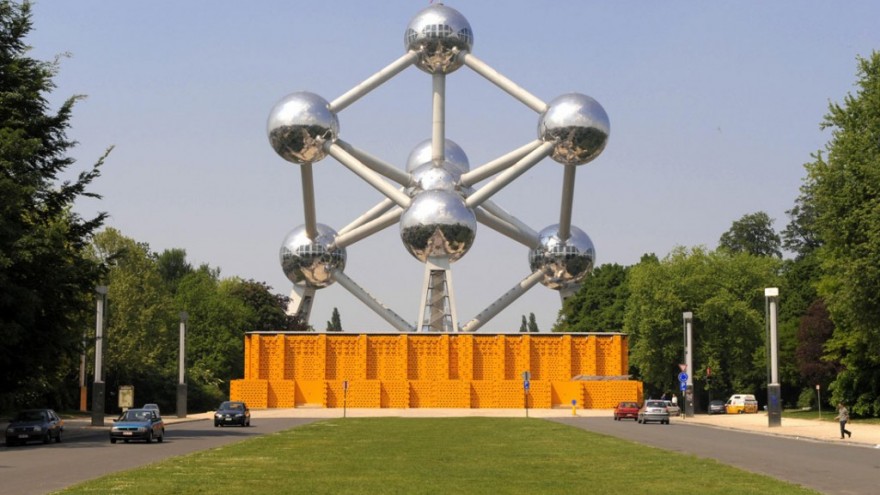Recycling is an important consideration for anybody planning to build a large-scale structure. It was therefore appropriate that Architects SHSH used re-useable beer crates for the construction of a temporary pavilion celebrating the 50th anniversary of the 1958 Universal World Exhibition in Brussels, Belgium.
A total of 33 000 bright yellow beer crates where used to construct the pavilion, which is positioned to face the Atomium building built for the original exhibition. The architects explain that temporary projects are only successful if they are free of waste. By taking an everyday consumer product and using it as a generic building material, it takes on a character beyond its conventional use, while also allowing the architects to experiment with features like columns, arches and domes.
The architects reponsible for the project are: Shin Bogdan Hagiwara (former co-director of V+ and now co-director of SHSH Architecture + Scenography), Thierry Decuypere (V+), Jorn Bihain (V+).
The pavilion is located on a roundabout where it can be viewed by pedestrians and motorists. The pavilion is ideally located to ask questions, 50 years later, about notions of progress, universalism and recycling.
Recycling is an important consideration for anybody planning to build a large-scale structure. It was therefore appropriate that Architects SHSH used re-useable beer crates for the construction of a temporary pavilion celebrating the 50th anniversary of the 1958 Universal World Exhibition in Brussels, Belgium.
A total of 33 000 bright yellow beer crates where used to construct the pavilion, which is positioned to face the Atomium building built for the original exhibition. The architects explain that temporary projects are only successful if they are free of waste. By taking an everyday consumer product and using it as a generic building material, it takes on a character beyond its conventional use, while also allowing the architects to experiment with features like columns, arches and domes.
The pavilion is located on a roundabout where it can be viewed by pedestrians and motorists. The pavilion is ideally located to ask questions, 50 years later, about notions of progress, universalism and recycling.











